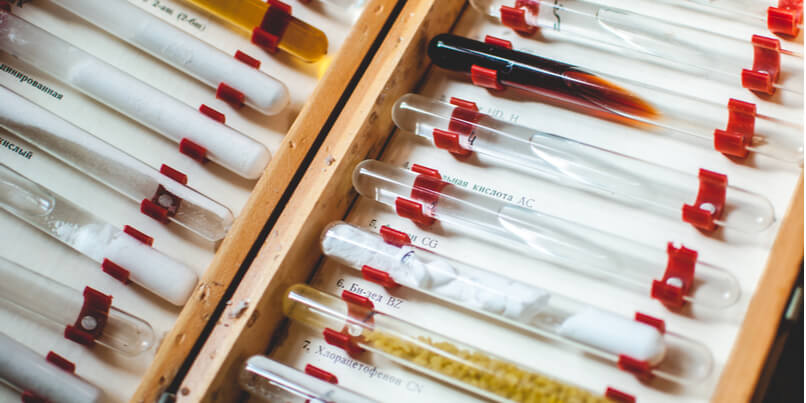 It is twenty-six years since the Japanese terrorist group Aum Shinrikyo released the deadly nerve agent sarin in a series of five coordinated attacks on Tokyo's subway system.
It is twenty-six years since the Japanese terrorist group Aum Shinrikyo released the deadly nerve agent sarin in a series of five coordinated attacks on Tokyo's subway system.
Twelve people lost their lives in the aftermath of the incident on March 20th 1995. More than 5,000 civilians required medical attention, with some fifteen-hundred found to have been moderately to severely poisoned by the effects of the toxin.
Subsequent analysis of the harrowing events of that day would reveal a number of key lessons which continue to inform and guide authorities, responders and medical teams in their preparedness and response to chemical incidents.
First is the importance of ensuring that emergency responders are provided with adequate and appropriate PPE and breathing apparatus.
Second is the need for systems that enable response personnel to quickly and accurately assess the possible causes of poisoning based on symptoms.
And third is the development of enhanced detection and identification methods that can provide simple qualitative analysis of poisonous substances.
Analysis of chemical attribute signatures (CAS)
With the threat of chemical terrorism continuing to remain a crucial global priority there has been a powerful drive within the scientific community to develop new forensic tools that can aid in the investigation and characterisation of chemical agents.
One especially productive area of research has focused on the leveraging of the chemical attribution signature (CAS) which can be used to help investigators identify a toxic chemical, and trace the origin and related materials of that agent back to its source.
Even the tiniest amounts of chemical materials contain elemental clues (starting materials, impurities, side products, by-products, additives etc) which can be analysed to reveal crucial information about the synthetic origin of a chemical agent, the nature of the synthesis process and the environment in which that material has been created.
The stable, highly reproducible and easily detectable nature of a chemical agent’s CAS can provide investigators with crucial technical information that can both complement and supplement traditional forensic processing methods.
Crucially too, it provides a way to enhance sample collection, to preserve evidence at a chemical incident scene and to link that evidence with people, places and other events.
The research and technology aiding CWA forensics
Research into the CAS of toxic chemical agents, and the ways in which this knowledge can be used to inform and enhance federal intelligence gathering efforts, has been a critical aspect of the Forensic Science Centre (FSC) for the past three decades.
From its base at the Lawrence Livermore National Laboratory (LLNL), the FSC is at the forefront of research and technology that supports US security, counterterrorism and non-proliferation efforts.
Currently, it is one of just two US laboratories that is internationally certified in the identification of chemical warfare agents (CWAs) and its forensics analysis and expertise plays a crucial role in supporting the interdiction of dangerous materials and the deterrence of terrorist attacks.
Much of the centre's work has focused on profiling the signatures of chemical warfare agents and inorganic/nuclear specimens. More recently, it has also expanded into other classes of chemicals including pharmaceuticals and illicit drugs.
With the help of state-of-the-art computational and statistical tools, researchers at the FSC have been able to more accurately determine the chemical attribution signature (CAS) of toxic chemical agents.
Attributing responsibility for CWA attacks
The wider practical applications of CAS are resounding. In April 2020, the Organization for the Prohibition of Chemical Weapons (OPCW) released their findings of a nine-month investigation into a series of sarin and chlorine attacks on the rebel-held town of Ltamenah in Syria in 2017.
In an article authored by Julie Masterson from the Arms Control Association, she described how the OPCW’s Investigation and Identification Team (IIT) was able to identify the presence of a specific “marker chemical” that linked a sample taken from the Ltamenah attacks with a sample remnant from Syria’s own chemical weapons stockpile.
“With the chemical signature to confirm the sarin dropped over Ltamenah on March 24 and March 30 was produced in a Syrian lab... the IIT’s April 8 report leaves little room for doubt about the role of the Syrian government in the March 2017 chemical attacks,” Masterson explained.
“This first report, based on nine months of investigation, is one of several that it is due to produce attributing blame for some 33 chemical weapons attacks where perpetrators have not yet been identified.”
If you would like to read more about the wider issues surrounding the use of chemical warfare agents, and the new technologies that are aiding CBRNe training, detection and identification, please click on the link below.





